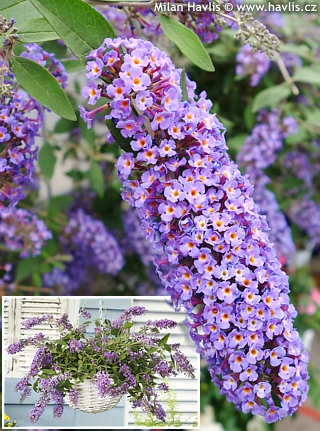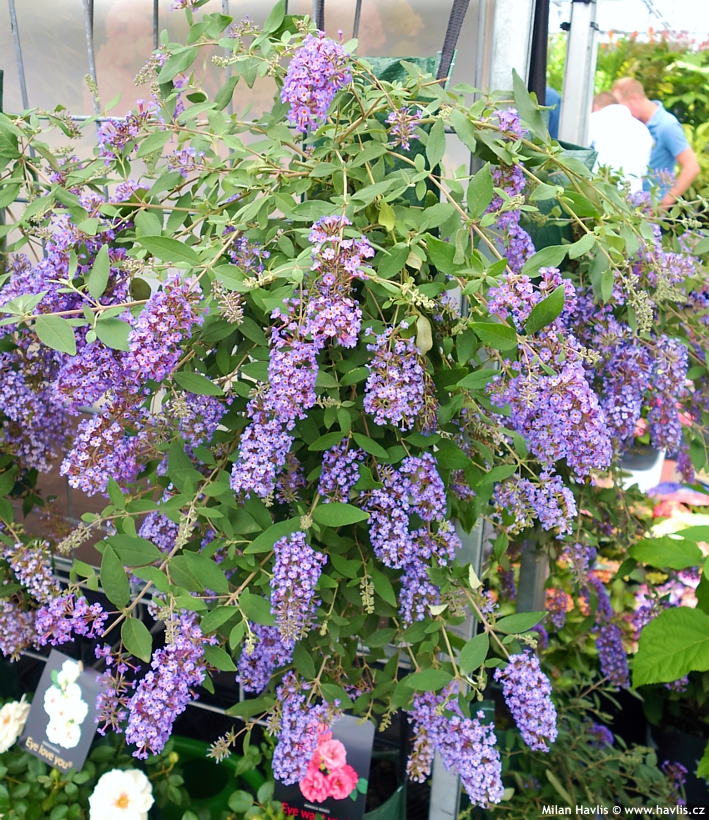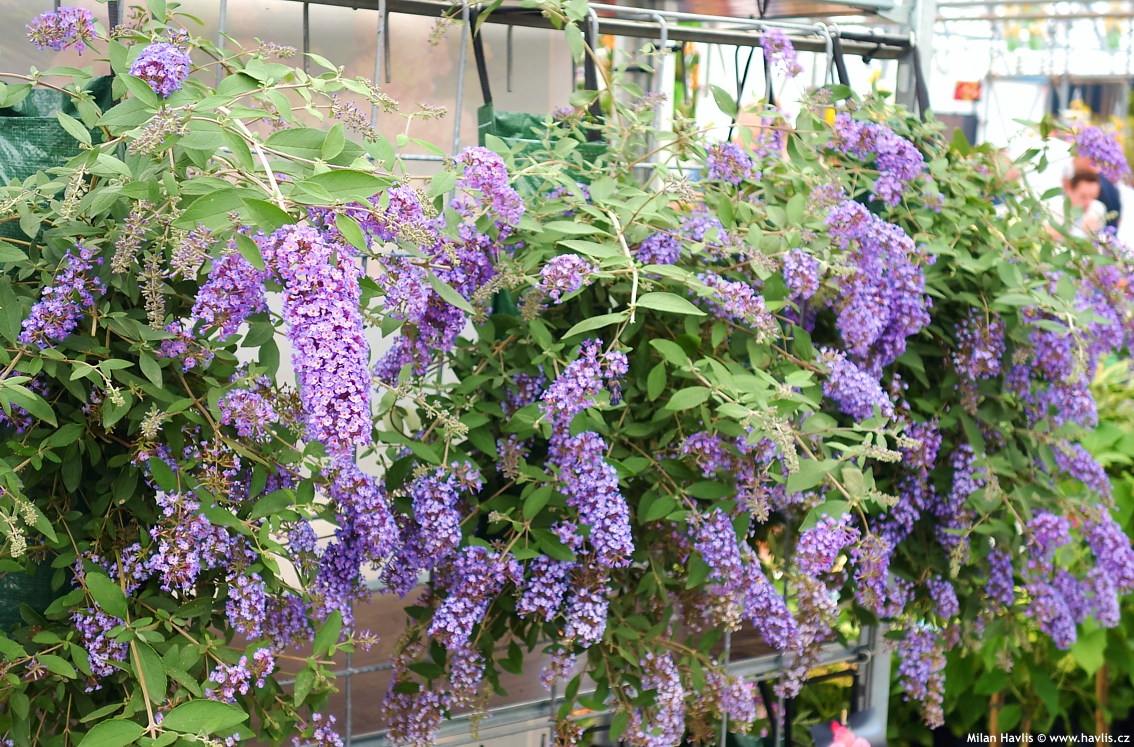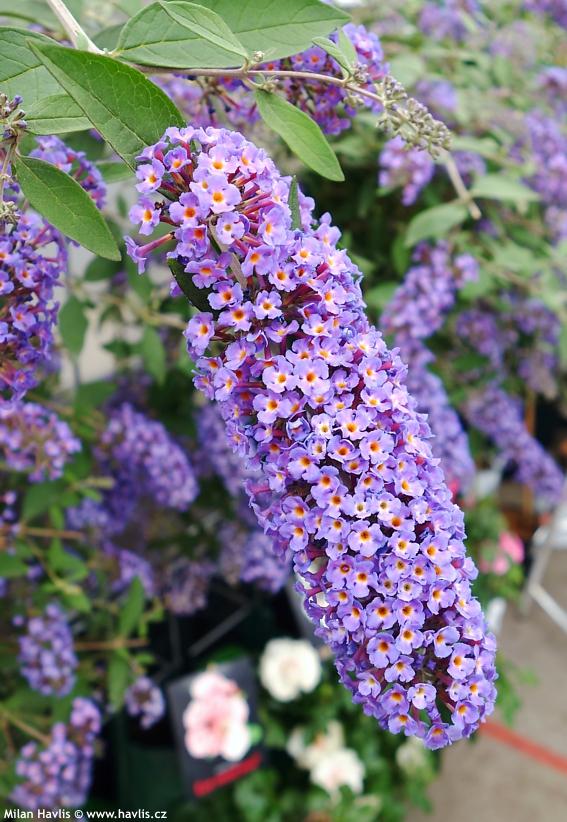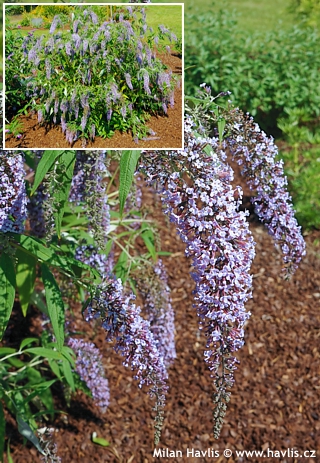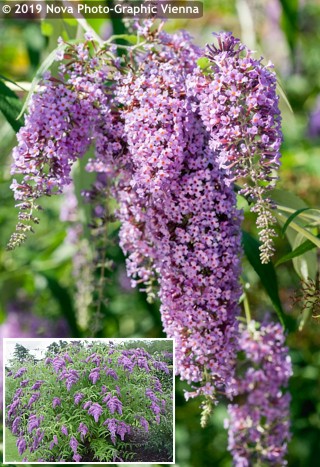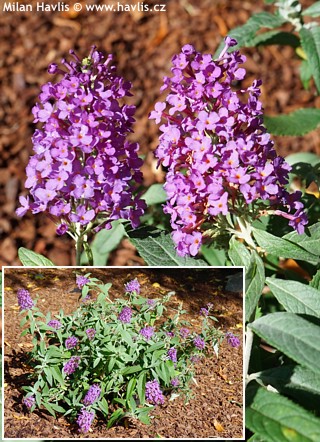Buddleja 'Hinbud1' DREAMING LAVENDER buddleja, butterfly bush
Buddleja
Buddleja is better known as butterfly bush. The reason is obvious – from early summer when it starts blooming until early autumn it produces large, scented flowers that attract winged insects, mostly butterflies. Old varieties are commonly large shrubs, however, more and more modern plants are bred for smaller and compact growth. American buddleja guru Peter Podaras from Cornell University has already produced two successful series of buddleja - Hinbud and Flutterby, where the latter makes colours so far unseen.
DREAMING LAVENDER is a unique butterfly bush variety of cascading habit. It produces numerous, conical inflorescence 15-18 cm long and 4-5 cm wide, composed of small, funnel-shaped, lavender violet flowers with orange throat. They are sweetly fragrant and bloom from early July until autumn if you regularly deadhead spent flowers and follow a regular feeding programme. Deciduous leaves are rather small, broadly elliptic, partly hairy, and medium to light green. Thanks to its cascading habit the best place to use it a top of a rockery or over a wall or in a hanging basket.
It was bred by Peter Podaras in California in 2010 and introduced in the USA as LAVENDER VEIL one year later. It arrived in Europe under a different trade name DREAMING LAVENDER in 2013 when also its patent No. PP23498 was granted.
Butterfly bush requires little care. Still, we strongly recommend hard pruning every spring to low permanent framework when buds begin to swell. Plant it in full sun, in well-drained humus-rich soil. It will die in boggy soil after winter. Though hardy to about -27°C (USDA zone 5b) it performs better in warmer zones. We suggest buying older plants with woody framework for planting in colder areas.
Last update 17-11-2020

































